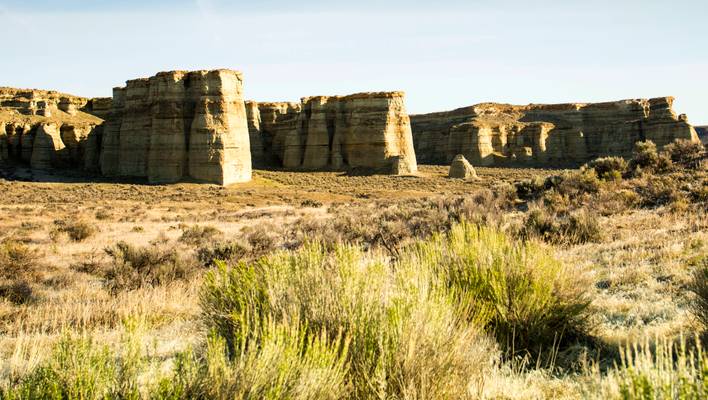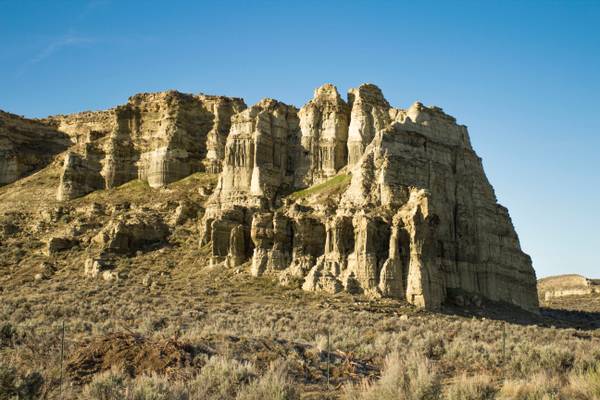United States » Oregon »
Pillars of Rome, Rome Oregon

0
The southeastern corner of Oregon is a paradise for rock hounds and nature lovers alike. Steens Mountain, a basalt fault block peak, rises like a colossal sentinel above the Alvord Desert. The Owyhee River Canyon’s rugged vastness is grand, without the crowds and tour buses, and is a perfect setting for whitewater rafting. Arock, another unincorporated community of similarly diminutive stature boasts a boulder marked with intriguing Native American petroglyphs (as well as a fairly unimaginative name).
But the Pillars of Rome certainly take the prize for “best excuse to stray from the Idaho-Oregon-Nevada Highway”. Standing 100 feet tall and stretching for five miles, these fossil-laden clay cliffs tower above the surrounding landscape and once unsurprisingly served as a landmark for stagecoach travelers on the Oregon Trail. It was a homesteader, William F. Stine, who in the early 20th century remarked the bluffs’ likeness to the ruins of Roman temples.

0
The southeastern corner of Oregon is a paradise for rock hounds and nature lovers alike. Steens Mountain, a basalt fault block peak, rises like a colossal sentinel above the Alvord Desert. The Owyhee River Canyon’s rugged vastness is grand, without the crowds and tour buses, and is a perfect setting for whitewater rafting. Arock, another unincorporated community of similarly diminutive stature boasts a boulder marked with intriguing Native American petroglyphs (as well as a fairly unimaginative name).
But the Pillars of Rome certainly take the prize for “best excuse to stray from the Idaho-Oregon-Nevada Highway”. Standing 100 feet tall and stretching for five miles, these fossil-laden clay cliffs tower above the surrounding landscape and once unsurprisingly served as a landmark for stagecoach travelers on the Oregon Trail. It was a homesteader, William F. Stine, who in the early 20th century remarked the bluffs’ likeness to the ruins of Roman temples.